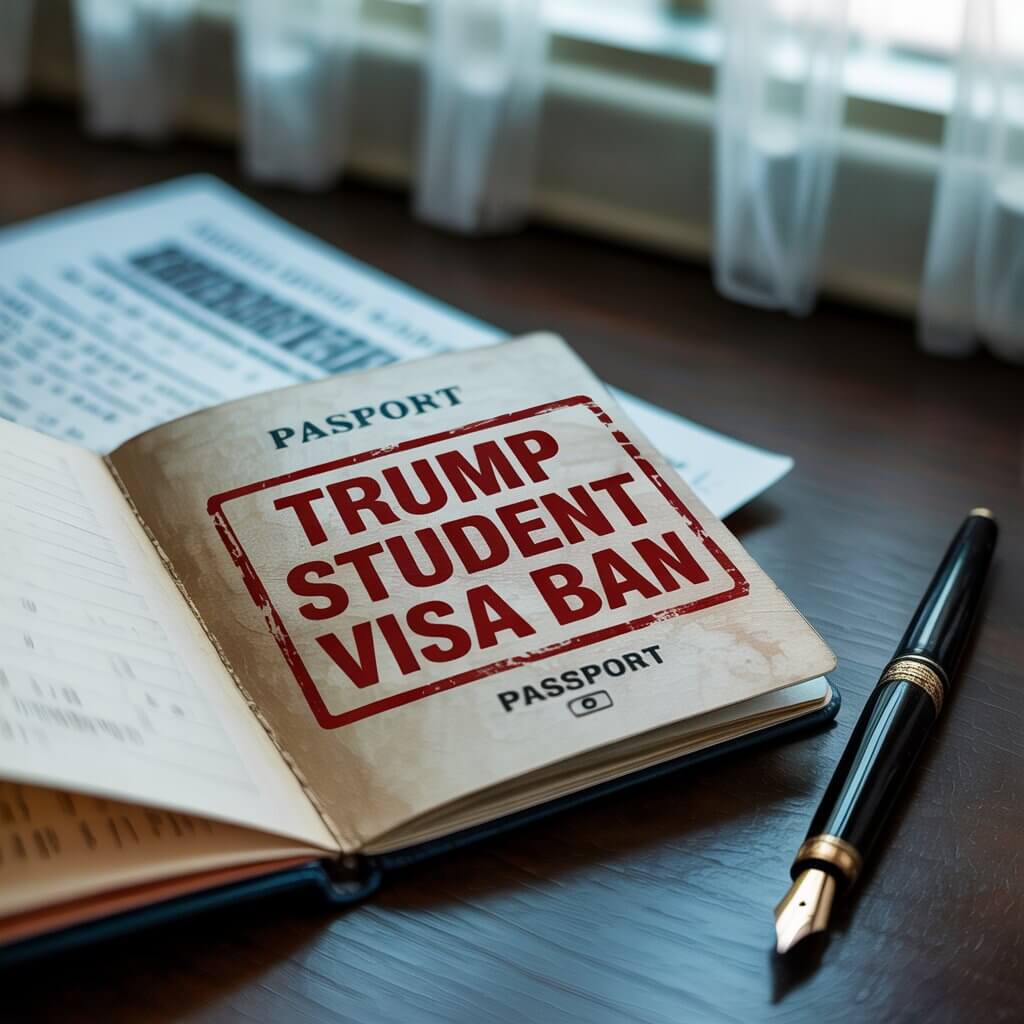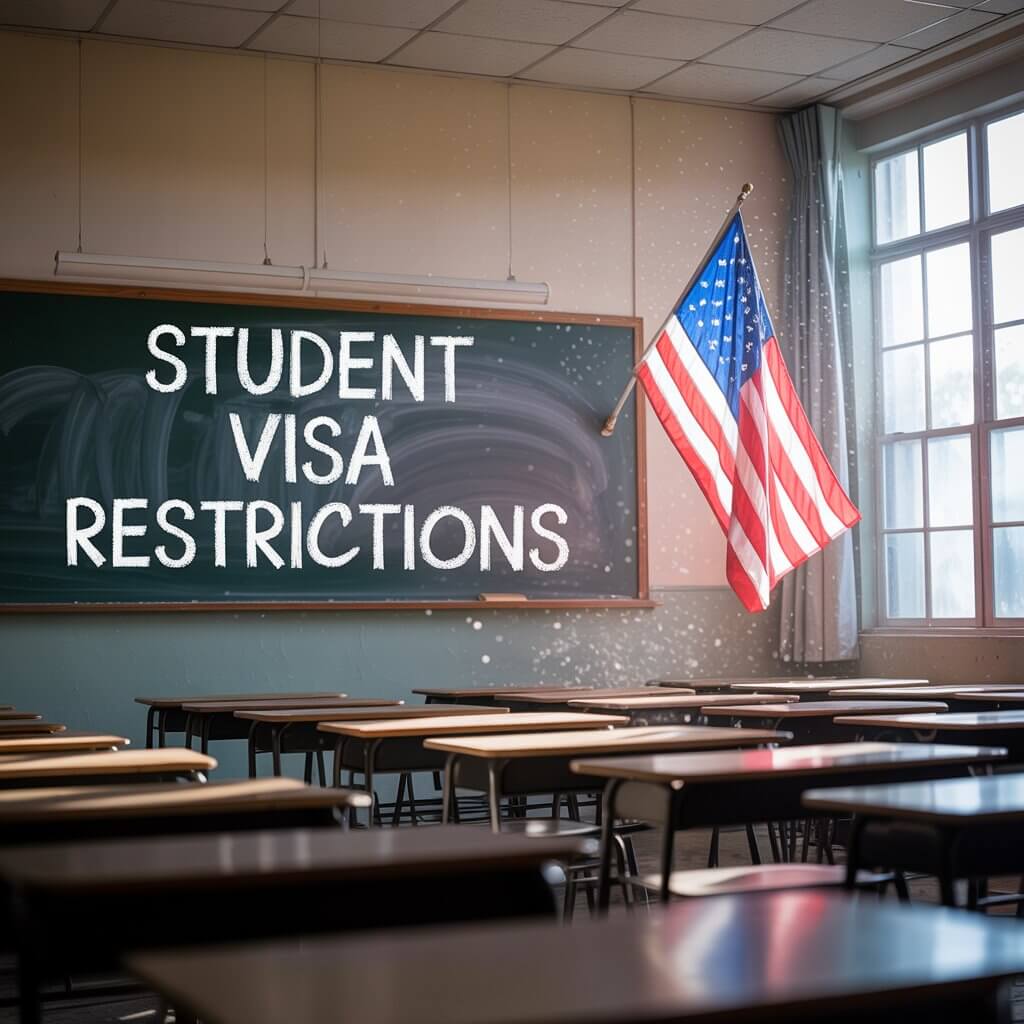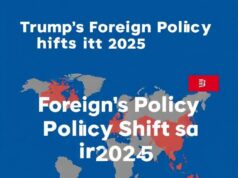A judge has stopped Trump from forcing international students out of Harvard. Trump student visa ban
Because of this, the court decided that the administration could not prevent these students from entering the U.S.We look at the court’s decision, discuss its influence on U.S.
immigration policy and explain how it affects students and universities nationwide.
The controversial policy proposal is the focus of this paper. How the Trump Administration gave these guidelines
In July 2020, when the COVID-19 pandemic was ongoing, the Trump administration instructed ICE to take away the visas of students attending only online classes
. It announced that people coming to the US on F-1 and M-1 visas could be ordered to leave the country.
Because of the pandemic, universities had to resort to remote learning.
At the outset, Harvard University and MIT quickly filed a legal challenge to this policy.
The reason this caused such outrage. Because of the directive, there was a strong opposition from critics.
. The situation also threatened the academic chances of countless students.
• Expected universities to resume physical classes, despite health risks.
Many people claim that the purpose was to get schools to return to in-person learning. Yet, Judge Blocks Trump’s Effort: The court’s decision altered what happened.The supreme court states the following at the start of the ruling: The Trump administration could not make the rule a reality. International students could keep living in the U.S. even if their universities decided to teach classes online. The government did not offer a legal explanation for the sudden change of policy. Immediate Impact Trump student visa ban
• Over 200,000 international students escaped deportion.
- Because of the ruling, universities were still allowed to use flexible learning models without students losing their visas.
- The ruling set a precedent for future immigration-related education policies.
Harvard and MIT Lead the Charge: A Unified Front Against Restrictive Measures
The direct response from the higher education community was one of general attack and outrage. Harvard University and the Massachusetts Institute of Technology (MIT), two of the nation’s most high-status societies and major magnets for international talent, quickly emerged as leaders in challenging the new ICE guidelines. Meaningful the devastating impact the policy would have on their student bodies and the broader academic ecosystem, Harvard and MIT filed a process in federal court in Massachusetts, seeking an injunction to block the employment of the directive. Trump student visa ban
Their care said that the ICE policy was random changeable, and an abuse of will, violating the Clerical Procedure Act(APA
). They contended that the agency had failed to provide a logical explanation for its rapid shift in policy, mostly given the first-time circumstances of the pandemic. Also, the universities highlighted the immense logistical and business burdens the policy would impose, forcing groups to rapidly reconfigure their academic offerings and convincing students to make incredible selections. The lawful challenge underlined the deep value that American campuses place on their international students and their commitment to defensive their abstract hunts.
The Legal Battle Unfolds: Arguments and Interventions:
After Harvard and MIT filed the charge, many academic institutions started to support the effort. Hundreds of universities, some of which are very large, supported Harvard and MIT in the case by explaining how international students are important to their communities and how harmful the ICE policy is. Trump student visa ban
Such briefs pointed out that international students support the economy, contribute to research and help enhance cultural life on campuses.
The core arguments presented by Harvard and MIT revolved around several key points:

.Lack of Due Process and Arbitrary Nature:
The universities claimed that ICE’s policy was created without giving people enough time to comment which violates important rules of administrative law. .
Irreparable Harm:
The lawsuit pointed out that the policy would do serious and lasting harm to international students, threatening their visas, making them leave the United States and interrupting their studies. They also mentioned the major financial consequences they would face if international enrollment fell.
Abuse of Discretion:
According to Harvard and MIT, ICE went beyond its authority and acted carelessly by issuing a policy that was very broad and did not explore other less restrictive ways.
The Department of Justice defended the ICE policy on behalf of the Trump administration by arguing it was a legal use of the agency’s authority over immigration and for national security.
They pointed out that the goal was to keep students with F-1 visas in classrooms so that their education matched the purpose of student visas. Most of these arguments did not deal with the real problems and the broad harm caused by the directive.
The Pivotal Ruling: How a Judge Blocks Trump Effort to Bar International Students at Harvard:
On July 14, 2020, only a few days after the lawsuit was filed, something important happened The Trump administration’s policy was dealt a major blow when District Judge Allison Burroughs said the government would withdraw its directive. Under the agreement, ICE went back to using the March 2020 guidelines. Thanks to these guidelines,
The decision was a big win for international students and a clear loss for the Trump administration’s effort to make immigration stricter.
It was Judge Burroughs who decided on the universities’ preliminary injunction during the hearing. It pointed out how solid the arguments from Harvard and MIT were. Trump student visa ban
This event demonstrated how judicial review helps protect the country from executive overstepping its boundaries.
Implications and Aftermath: A Glimpse into the Future of International Education.
The decision by the judge had effects that reached past the situation it prevented.
Restoration of Stability for International Students:
. It was very important for students dealing with the many travel limitations and personal challenges caused by the pandemic.
Preservation of Academic Freedom and Institutional Autonomy.
The outcome was a major win for both academic freedom and the independence of colleges and universities. Universities claimed that the ICE policy stopped them from deciding on the safest and best methods to teach students during a pandemic. In striking down the directive, the courts upheld the right of schools to decide how to teach, free from too much government control.
Reinforcement of the Value of International Education.
Along with their education fees, international students play a major role in research, new ideas, cultural sharing and understanding the world. Besides, they participate in classroom discussions, introduce new viewpoints and help students keep in touch after they graduate. Overall, the legal case made it clear how much international students help keep America at the forefront of global higher education.
In fact, national growth greatly depends on attracting talent from around the world.
Challenges and Ongoing Debates in Immigration Policy:
Even though the original problem was solved, the fight for international students showed that U.S. immigration policy is still full of challenges. As a consequence, people began to talk more about how fairer immigration policies could support and encourage scientists and academics to work together. It highlighted once again that international students are affected by political changes and need strong legal safeguards. Those supporting international students are still working for immigration reform that acknowledges the lasting advantages of drawing and keeping global talent.

Resilience of the Higher Education System:
This episode highlighted how strong and united the American higher education system can be. Universities which were usually separate, teamed up to oppose a policy that could affect their main purpose. Because students acted calmly and the law acted quickly, students’ comfort was decreasing and colleges’ status stayed intact. It also pointed out that public pressure and legal advocacy greatly influence what happens with immigration.
Tables: Impact of International Students (Illustrative Data)
| Category : Impact of International Students |
| Economic Contribution: Over $40 billion annually to the U.S. economy (pre-pandemic estimates) |
| Job Creation: Supports hundreds of thousands of jobs across various sectors |
| Research & Innovation Significant contributors to STEM fields, patents, and scientific breakthroughs |
| Cultural Exchange: Enhances diversity, understanding, and global perspectives on campus |
| Global Diplomacy: Future leaders and ambassadors fostering international goodwill Export to Sheets |
Frequently Asked Questions (FAQs)
Q1: What was the specific Trump administration policy that the Judge Blocked regarding International Students at Harvard? A: In July 2020, Immigration and Customs Enforcement (ICE) announced that students enrolled in F-1 and M-1 programs who would be learning online for fall 2020 semester could not remain in the United States. Q2: Which institutions led the legal challenge against this policy? A:Harvard University and MIT were the main parties that sued the government over the ICE directive.
Q3: What was the main legal argument used by Harvard and MIT to challenge the policy? A: Harvard University and MIT were the main parties that sued the government over the ICE directive.
Q4: Who was the judge who ultimately blocked the Trump administration’s effort? A: The government’s decision to rescind the policy was the result of a ruling by U.S. District Judge Allison Burroughs.
Q5: What was the immediate outcome of the judge’s ruling regarding international students?
A:Students from other countries could keep their visas because ICE went back to the March 2020 rules that allowed for online studying.
Q6: How did the higher education community react to the policy and the subsequent legal challenge?
A: Many people in higher education spoke out in outrage and condemnation. Harvard and MIT received support from more than 200 universities which pointed out how vital international students are in their areas.
Q7: What broader implications did this legal battle have for academic freedom?
A: According to the ruling, educational bodies can determine their teaching methods on their own, without interference from the government during a health pandemic.
Bullet Points: Key Takeaways from the Legal Battle
Under the Trump administration’s 2020 ICE policy, foreign students risked deportation if their schools operated only online.
Both Harvard and MIT immediately took the government to court, claiming the ban was unjust and harmful.
The event highlighted how stable policies are needed to address the challenges we face.
It also proved that people speaking out together can make a difference and that the courts help defend rights.
Many colleges and universities added their opinions to the case by providing amicus briefs.
A district court judge stopped President Trump’s effort to stop foreign students from attending Harvard on July 14, 2020.
The judge decided that many international students ought not to be required to leave the United States.
As a consequence, universities could once again make their own decisions about academic matters.
The report underlined the major role international students play in building America’s economy and culture.
Conclusion:
A Resounding Affirmation of International Education
The ruling by a federal judge to stop Trump’s effort to ban international students at Harvard was an important moment for international education in the U.S. It was also found that strong policies are necessary to help universities from different countries collaborate. The court ruling meant there was more than just a temporary stop to the situation. It showed that American colleges and universities are popular and continue to value global education
https://www.facebook.com/share/19aQkSQyEb/
https://www.instagram.com/globalnews.pk?igsh=aTFwbHp3eGRuN3ln
https://wa.me/qr/PZX44WLANZDSL1
https://wa.me/qr/PZX44WLANZDSL1














